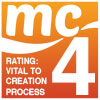Missed the first installment of this article series? Read it here.
The majority of independent employers/collaborators who are seeking comic book artists do not know the first thing about making a comic. Some do, but most don’t. They don’t understand that a single page of professional quality art can easily take days to produce, and are sometimes produced by multiple people. A lot of people seem to think that they are doing you a favor by offering to allow you to work on their comic, and as a result they don’t have to pay fair wages. They seem to think that all you have to do is sit down at your drawing table (or screen), snap your fingers, and a masterpiece will materialize before your eyes. To these people I say – DO 5 MINUTES OF BASIC RESEARCH! Producing well-drawn comic art is no easy feat, and those of us who do it for a living have been practicing nearly our entire lives to refine our skills. Artists have to eat and pay bills like everyone else, so we deserve to be paid for our work. Just because it’s a creative field does not mean we work for free. Our skills are a trade just like any other. Would you ask a plumber to spend all day working on your toilet only to offer them $10 once it’s fixed? I seriously hope not.
[Tweet “”…a single page of professional quality art can easily take days to produce.” @MichaelYakutis”]







 Plotting out perspective for comic book page/panel composition is paramount to building great art. One of the hardest elements of composing perspective for a panel is getting all of the measurements just right so that all of the angles for your environmental elements within your panel come out right. Sergey Kritskiy’s perspective tool allows you to create amazingly accurate grids for your comic within seconds.
Plotting out perspective for comic book page/panel composition is paramount to building great art. One of the hardest elements of composing perspective for a panel is getting all of the measurements just right so that all of the angles for your environmental elements within your panel come out right. Sergey Kritskiy’s perspective tool allows you to create amazingly accurate grids for your comic within seconds.
